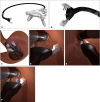Endoscopic Management of Gastroesophageal Reflux Disease: Revisited
- PMID: 27744659
- PMCID: PMC5066398
- DOI: 10.5946/ce.2016.133
Endoscopic Management of Gastroesophageal Reflux Disease: Revisited
Abstract
Gastroesophageal reflux disease (GERD) is defined by the presence of troublesome symptoms resulting from the reflux of gastric contents. The prevalence of GERD is increasing globally. An incompetent lower esophageal sphincter underlies the pathogenesis of GERD. Proton pump inhibitors (PPIs) form the core of GERD management. However, a substantial number of patients do not respond well to PPIs. The next option is anti-reflux surgery, which is efficacious, but it has its own limitations, such as gas bloating, inability to belch or vomit, and dysphagia. Laparoscopic placement of magnetic augmentation device is emerging as a useful alternative to conventional anti-reflux surgery. However, invasiveness of a surgical procedure remains a concern for the patients. The proportion of PPI non-responders or partial responders who do not wish for anti-reflux surgery defines the 'treatment gap' and needs to be addressed. The last decade has witnessed the fall and rise of many endoscopic devices for GERD. Major endoscopic strategies include radiofrequency ablation and endoscopic fundoplication devices. Current endoscopic devices score high on subjective improvement, but have been unimpressive in objective improvement like esophageal acid exposure. In this review, we discuss the current endoscopic anti-reflux therapies and available evidence for their role in the management of GERD.
Keywords: Catheter ablation; Endoscopy; Fundoplication; Gastroesophageal reflux; Surgery.
Conflict of interest statement
The authors have no financial conflicts of interest.
Figures






References
-
- Katz PO, Gerson LB, Vela MF. Guidelines for the diagnosis and management of gastroesophageal reflux disease. Am J Gastroenterol. 2013;108:308–328. - PubMed
-
- Abraham NS. Proton pump inhibitors: potential adverse effects. Curr Opin Gastroenterol. 2012;28:615–620. - PubMed
-
- Schoenfeld AJ, Grady D. Adverse effects associated with proton pump inhibitors. JAMA Intern Med. 2016;176:172–174. - PubMed
Publication types
LinkOut - more resources
Full Text Sources
Other Literature Sources
Medical
Miscellaneous

